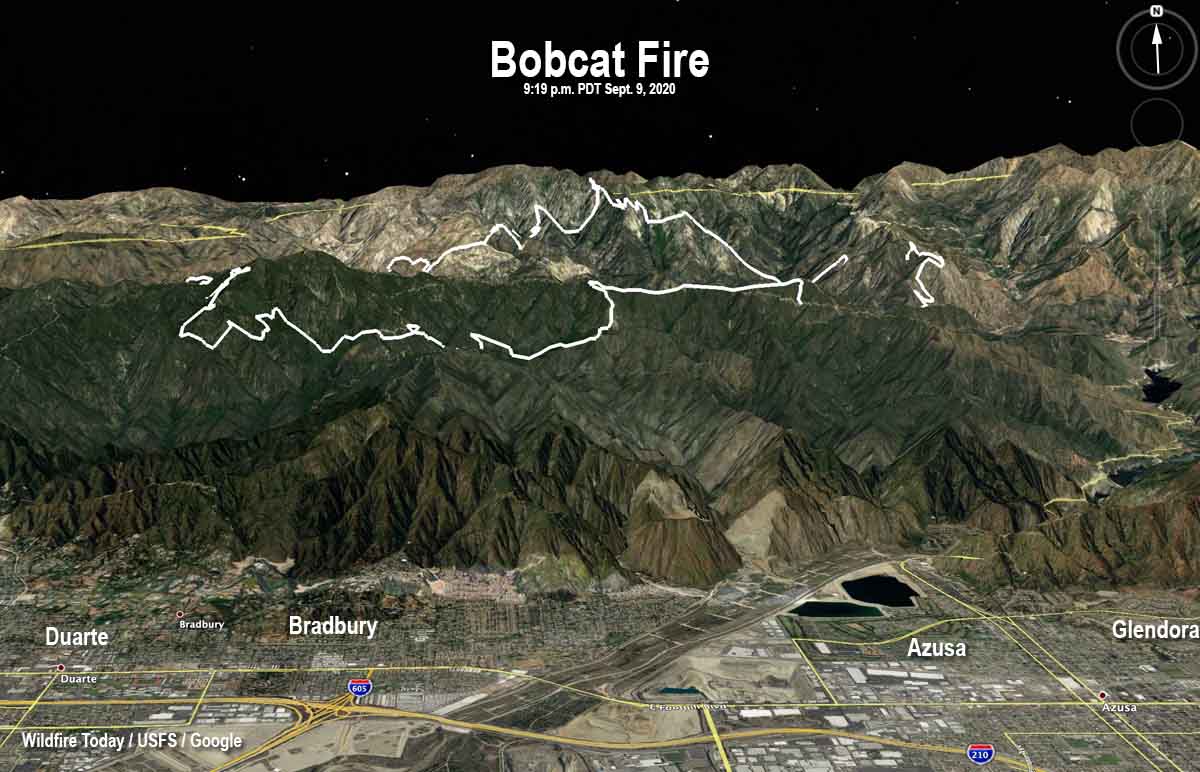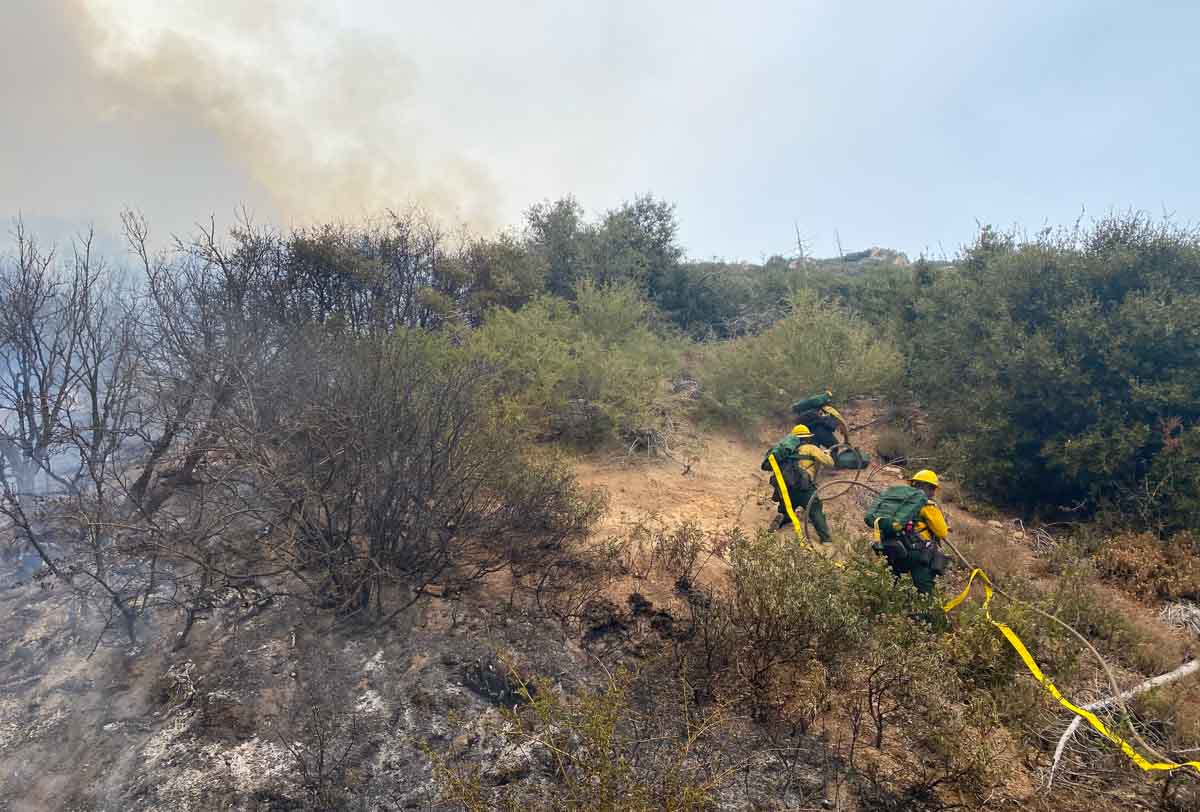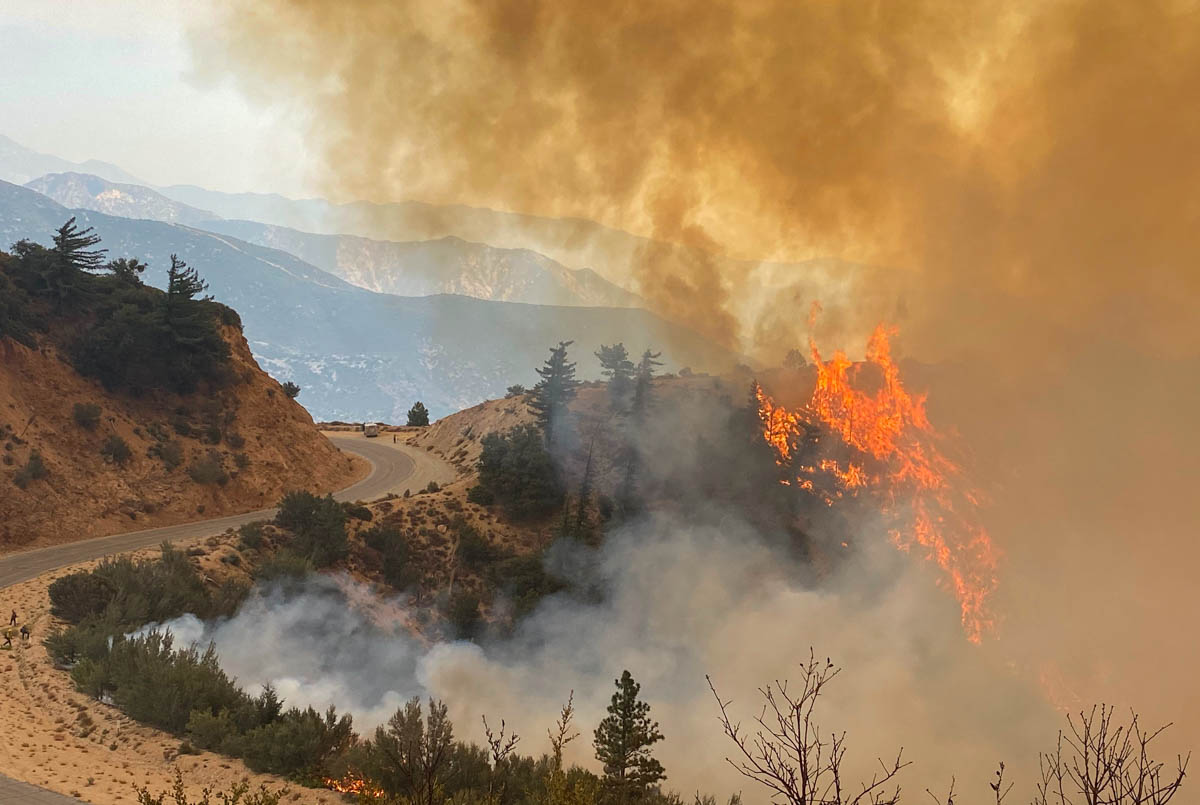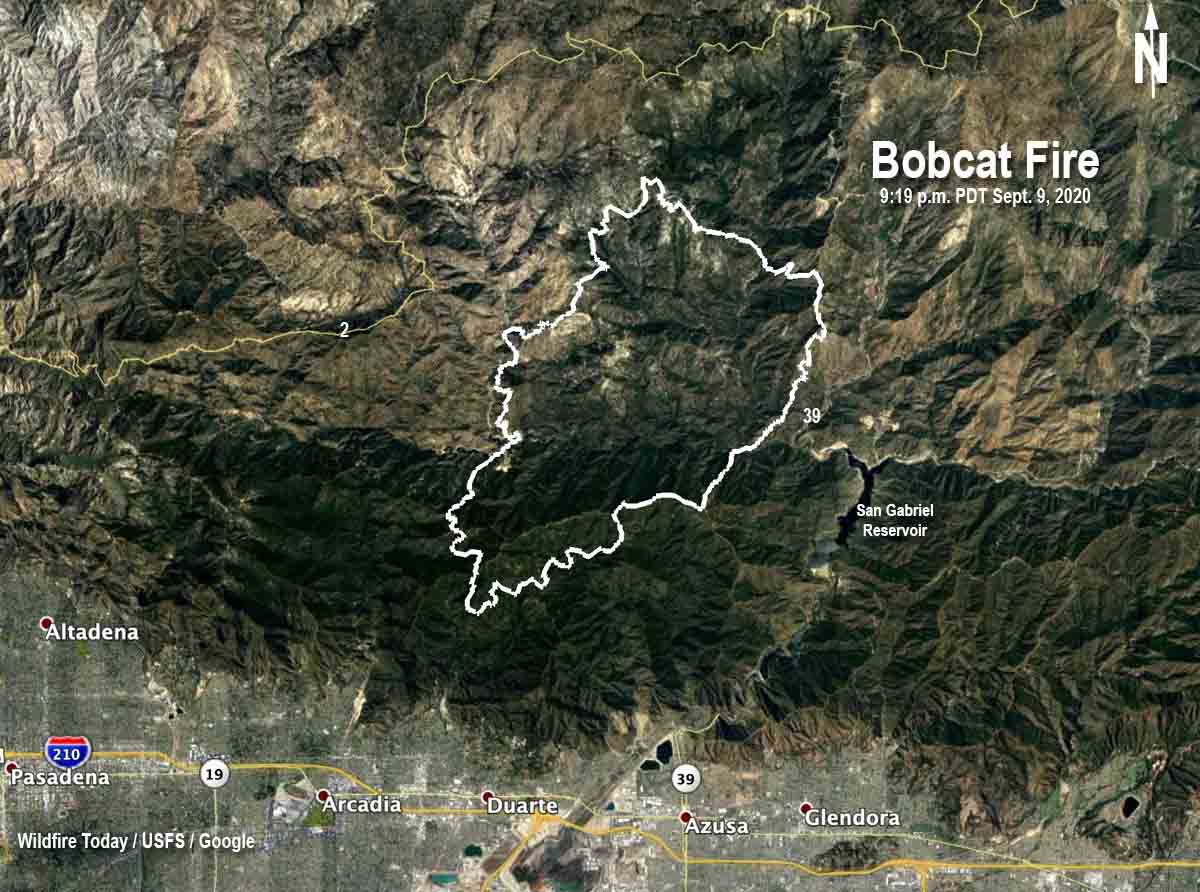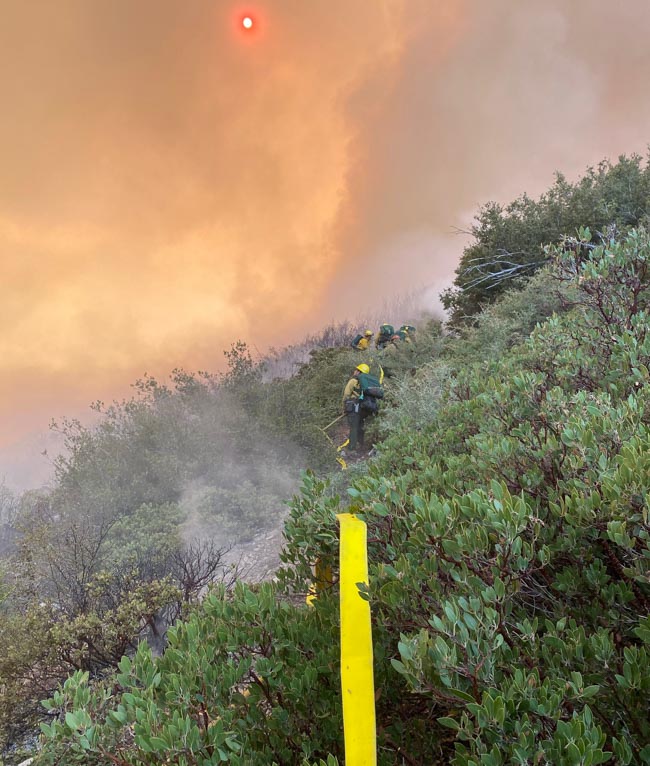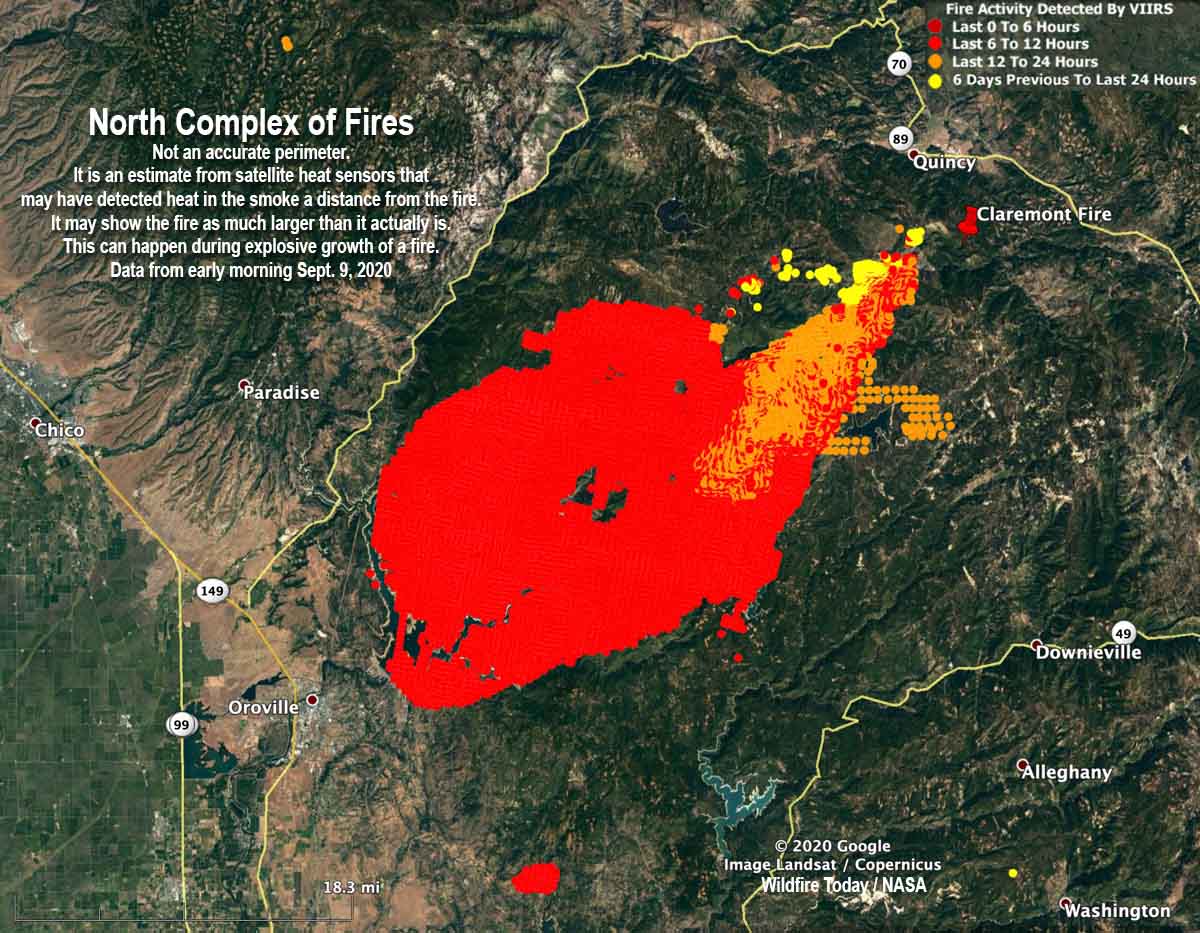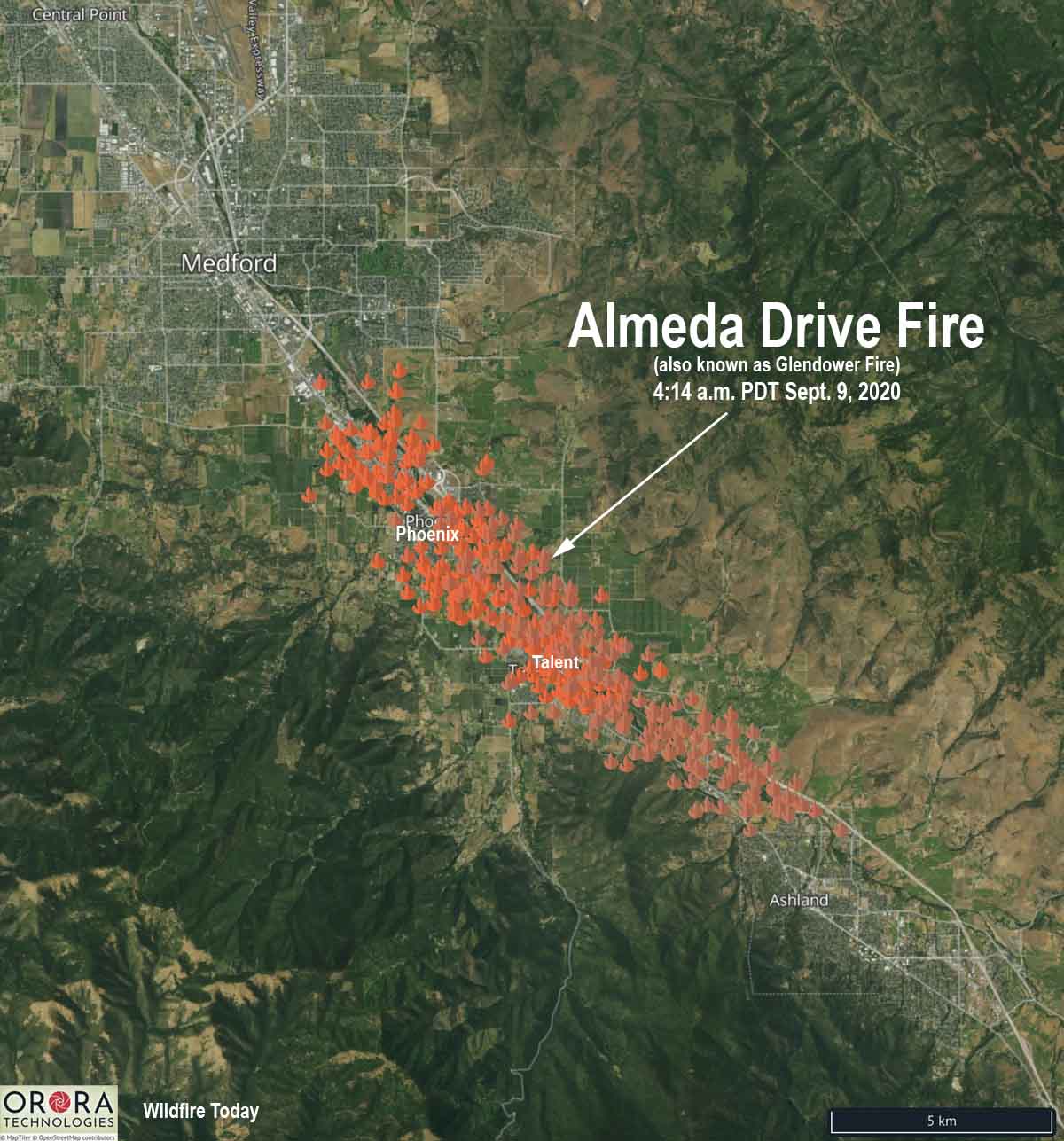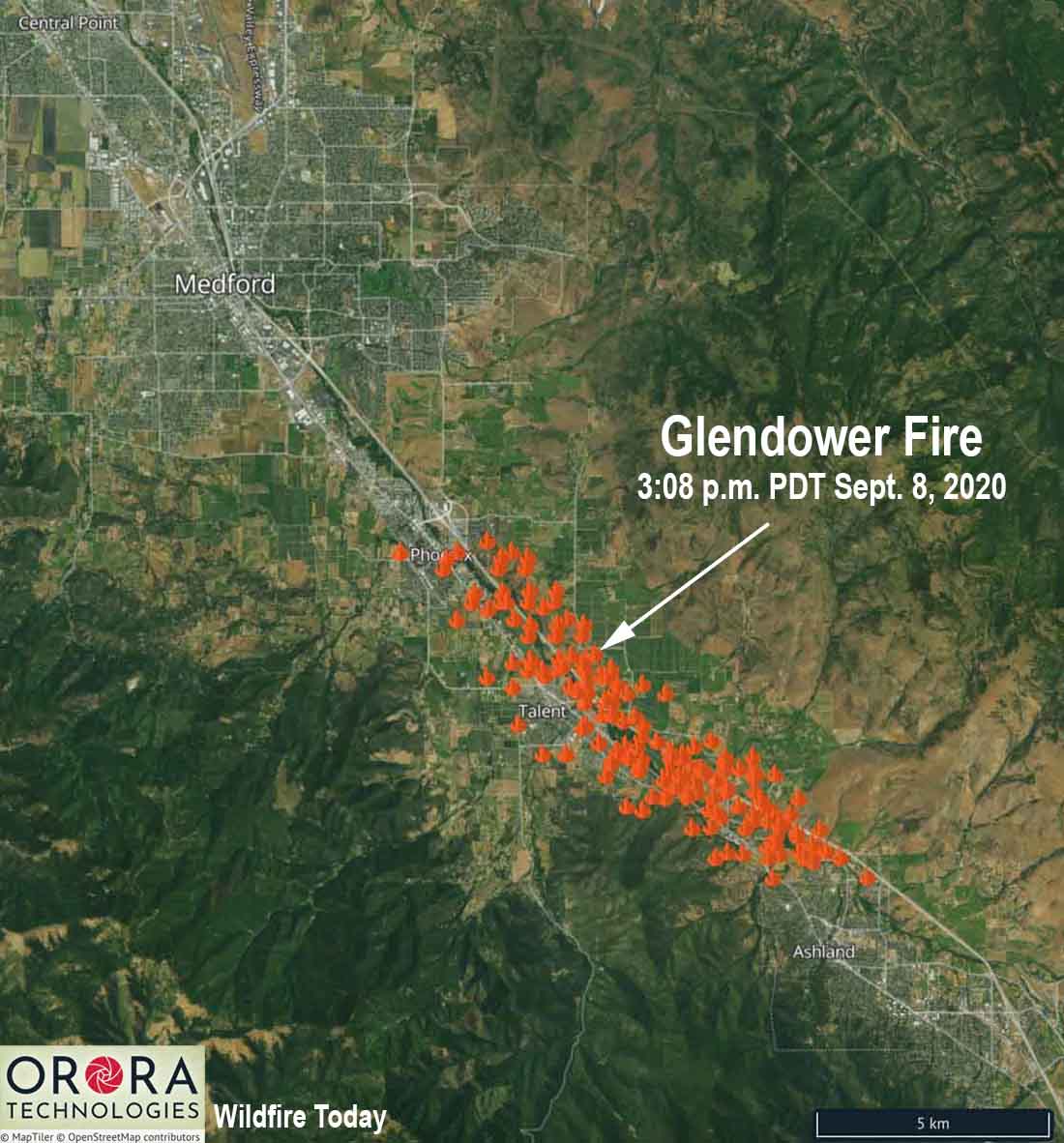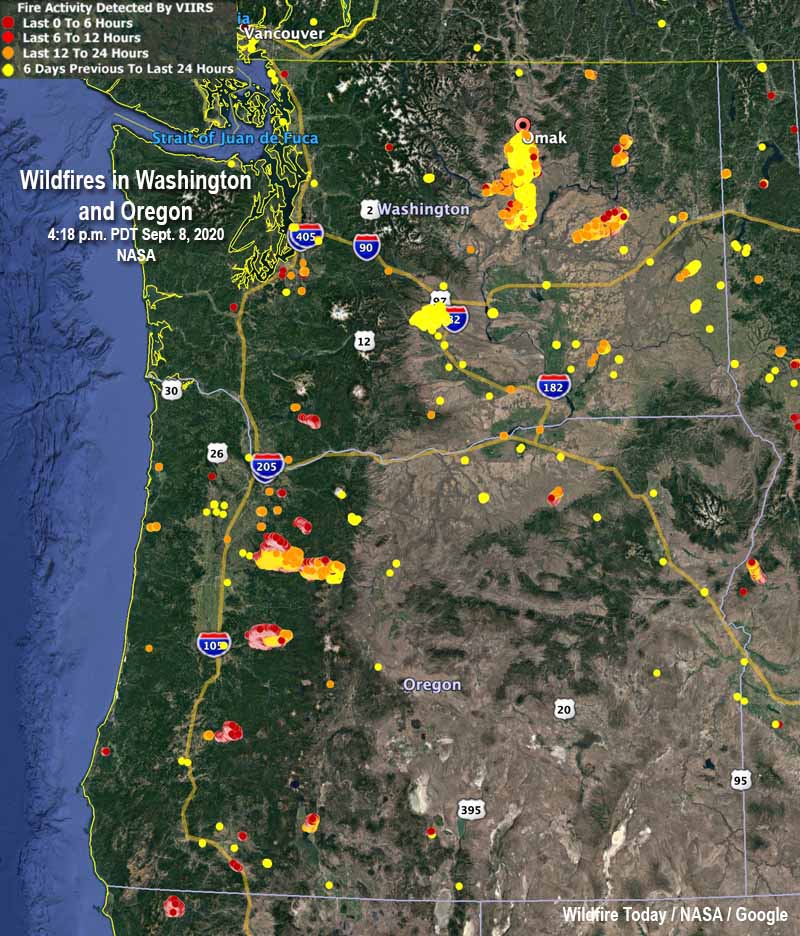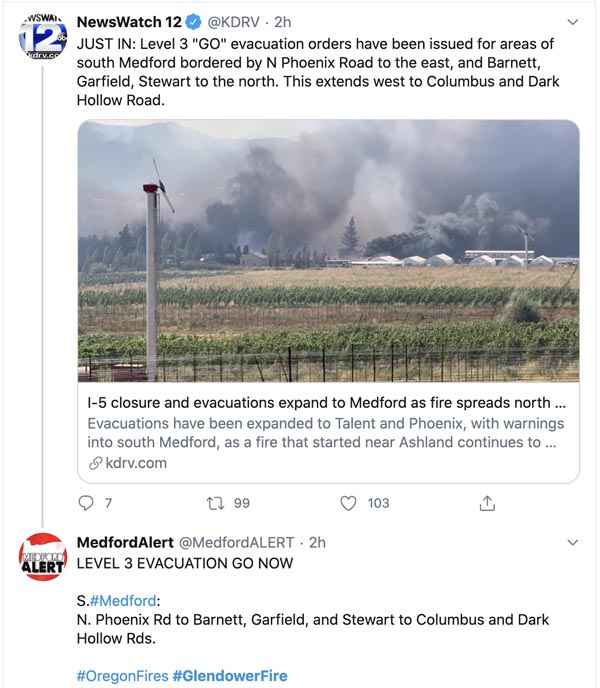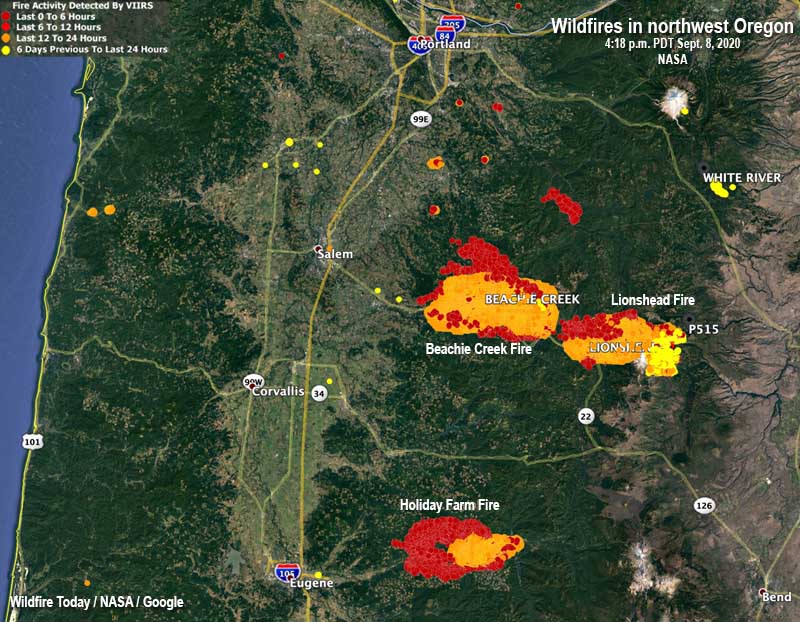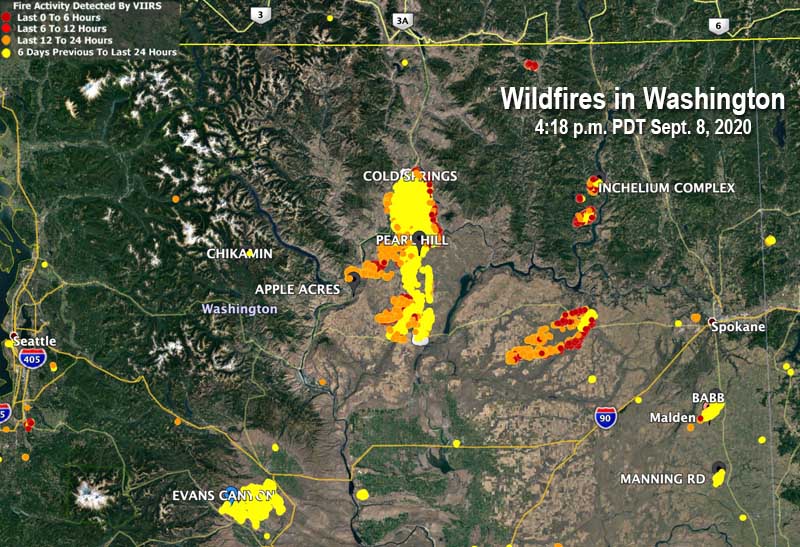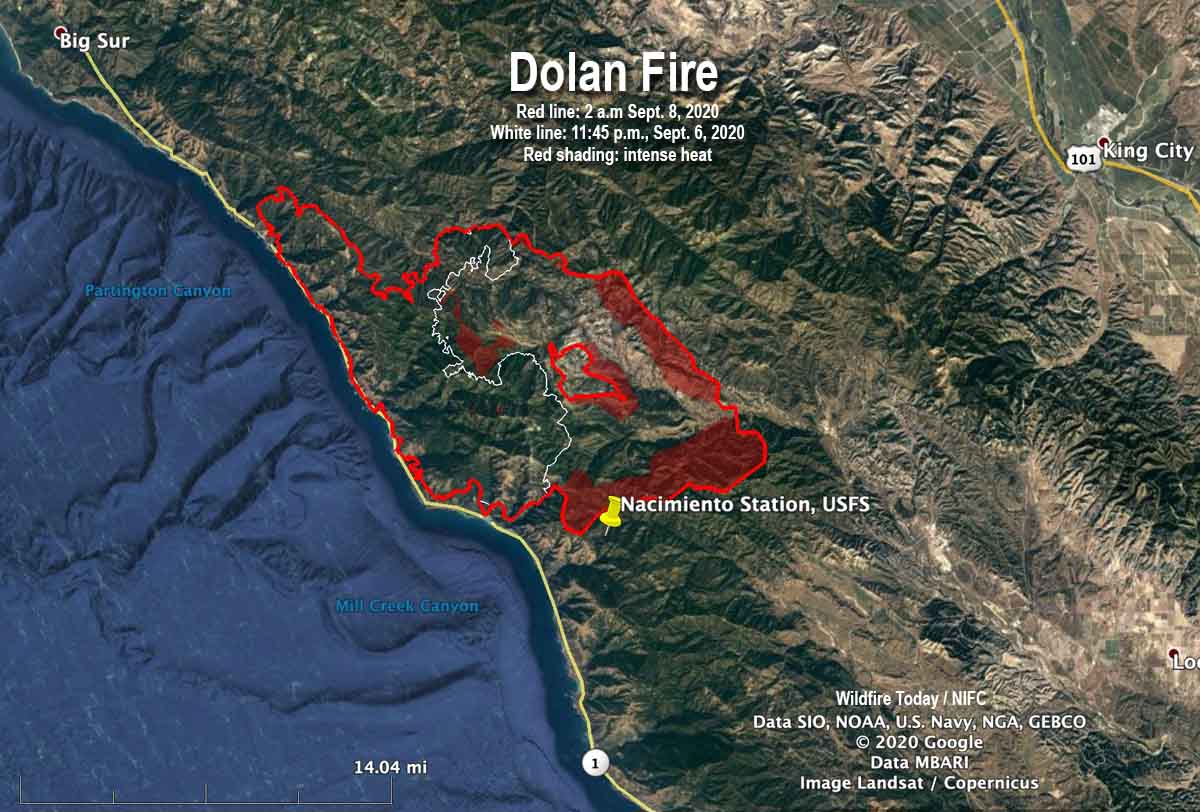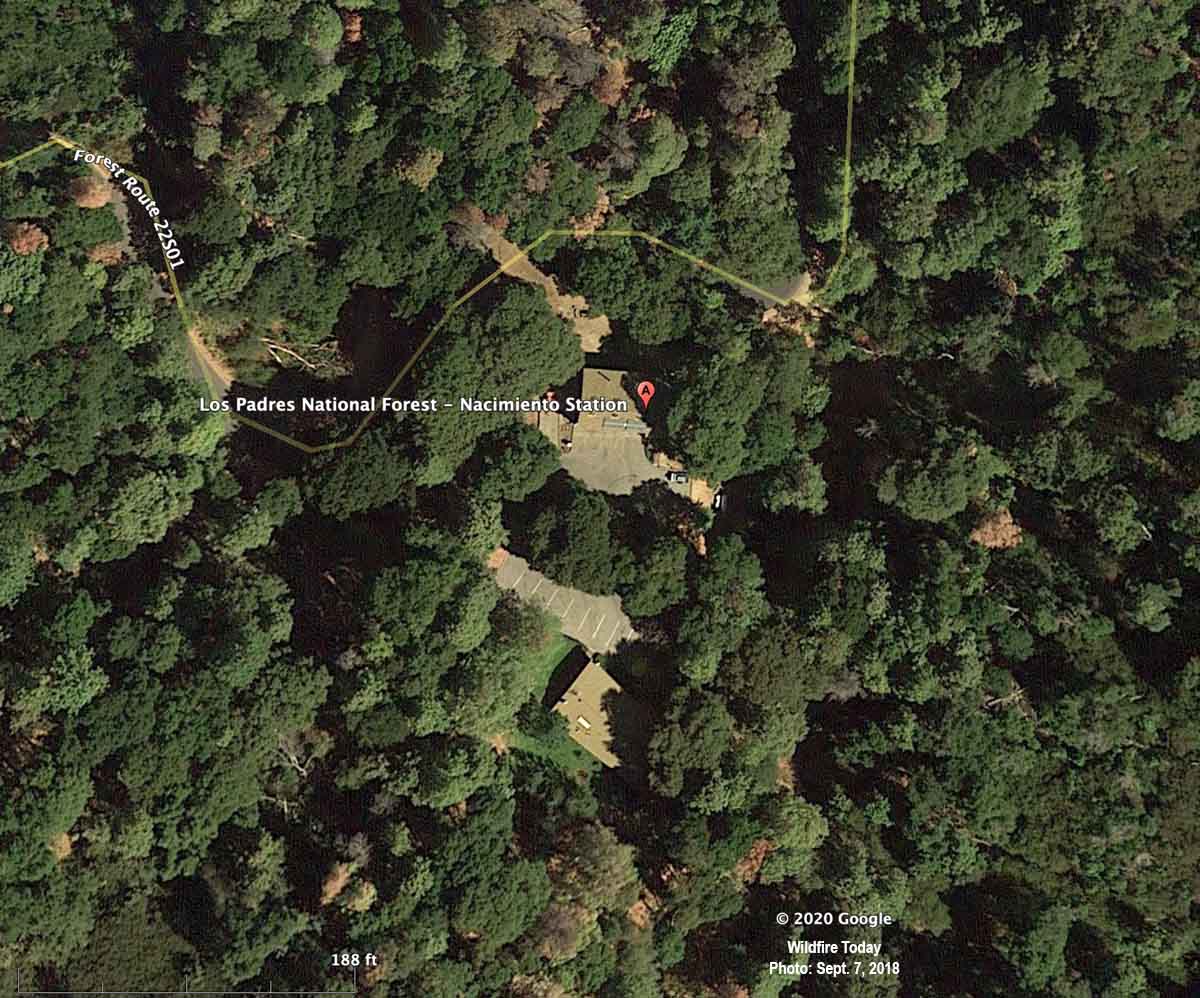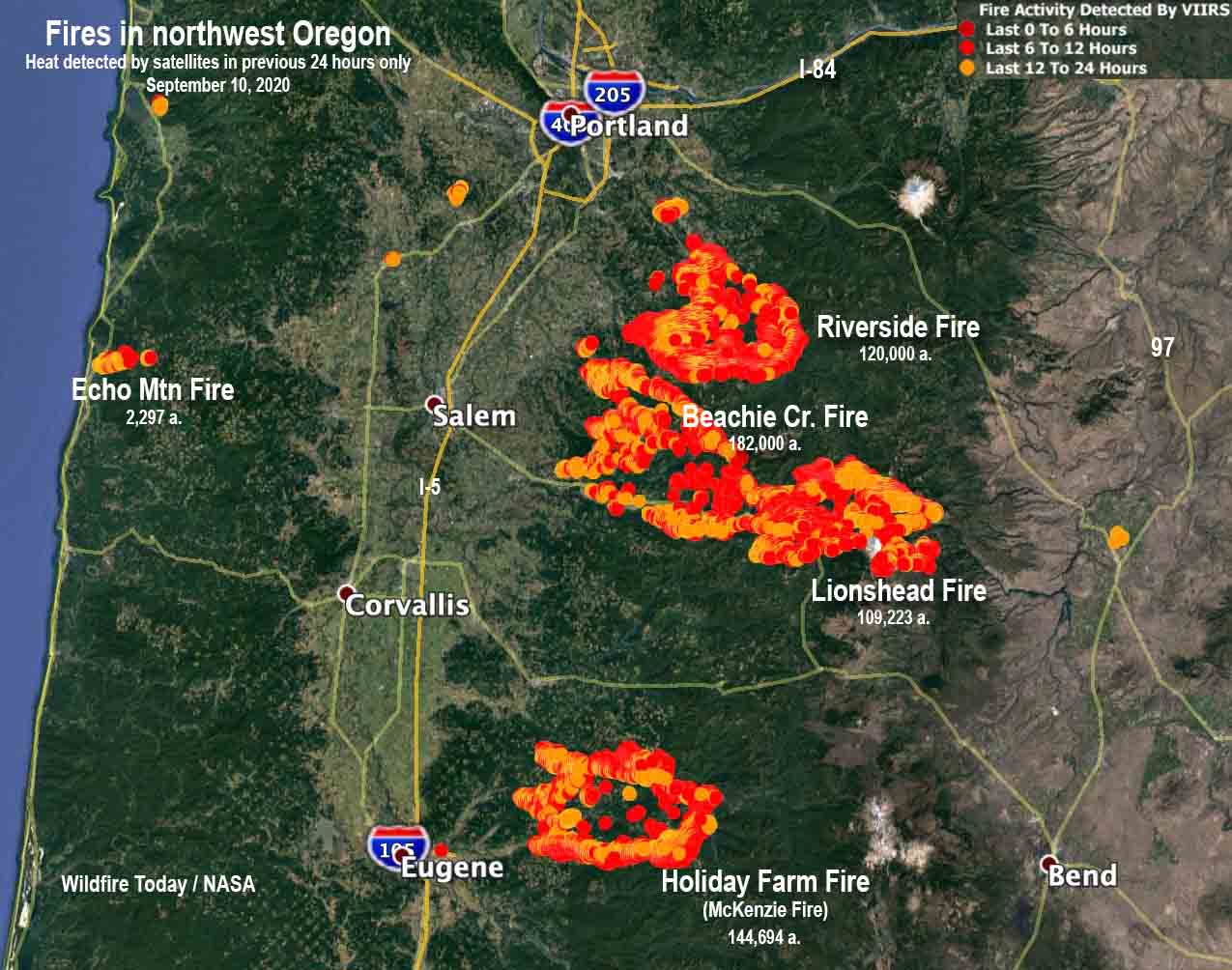
At least 50 fires have burned over 800 square miles in Oregon, and again on Wednesday, dry, breezy weather kept them growing. Governor Kate Brown said that during this fire siege the state will likely experience the greatest loss of property and lives from wildfires in its history. This a result of the confluence of several factors, including drought and lightning, along with hot, dry, and very windy weather.
The Oregon Office of Emergency Management has created an interactive website to help provide information about evacuations statewide.
The Beachie Creek Fire 17 miles east of Salem started August 16. On September 6 it was 469 acres but the historic wind storm the next day caused it to grow overnight to 131,000 acres. On September 9 it was mapped at 182,000 acres and was 19 miles east of Salem. Fire personnel had to evacuate their incident command post after electrical lines and transformers were destroyed during the wind event. An update from the incident management team on September 9 said “mass evacuations are being planned”. The east side of the Beachie Creek Fire has merged with the Lionshead Fire. The fire organization has a Facebook page with evacuation information.
The 109,223-acre Lionshead Fire started August 16 on the Confederated Tribes of Warm Springs Reservation 14 miles west of the Warm Springs community and has spread to the Willamette National Forest merging into the east side of the Beachie Creek Fire. It is actively growing on the west side of the Cascades. Long range spotting contributed to the fire spreading for 12 miles reaching areas near Breitenbush and Detroit Lake. The fire also crossed highway 22 in multiple places. More information can be found on Facebook.
The Holiday Farm Fire, also known as the McKenzie Fire, has burned 144,694 acres about 14 miles east of Eugene. Evacuations are in effect; the Lane County government and Linn County Sheriff’s office has more information. On Wednesday fire behavior and weather conditions were still treacherous and kept firefighters from accessing many areas, but they were able to protect some structures by burning out around them to remove flammable vegetation. Winds on Thursday are expected to shift and begin blowing out of the west and relative humidity is expected to be in the low teens. These weather conditions may contribute to another day of very active fire behavior.
The 120,000-acre Riverside Fire is southeast of both Oregon City and Portland. Most of the spread in the last 24 hours was on the southwest and northwest sides. The blaze moved four miles down the Clackamas River corridor towards the communities of Estacada and Springwater. Crews worked overnight to continue point protection efforts on homes and other critical infrastructure in that area and along Highway 211. On Thursday firefighters hope to take advantage of predicted lighter winds during the afternoon to conduct critical air operations. However, changing wind directions throughout the day could spur additional fire growth in multiple directions. Thursday morning fire officials estimated it was approximately two air miles from the community of Estacada, Oregon. The Clackamas County Sheriff’s office has information about evacuations that are in effect.
The Echo Mountain Complex has burned 2,297 acres south and east of Otis at the intersection of Highways 101 and 18. Evacuations are in effect. It is burning on both the north and south sides of 18. The Oregon Department of Forestry reports that local firefighters and ODF personnel have been out in force around the clock on the fire lines, but outside help is very limited due to the large number of fires across the state. Matt Thomas of ODF said Wednesday there has been no containment yet, and that may not happen for an extended period of time. More information is on the ODF’s West Oregon District Facebook Page.

